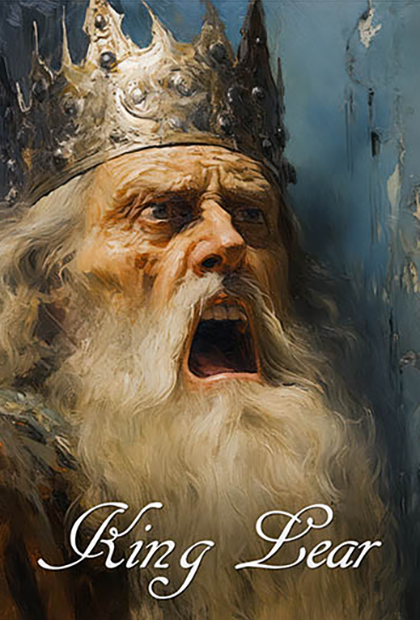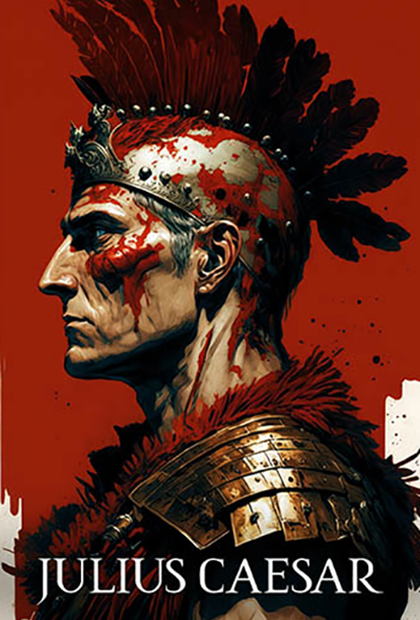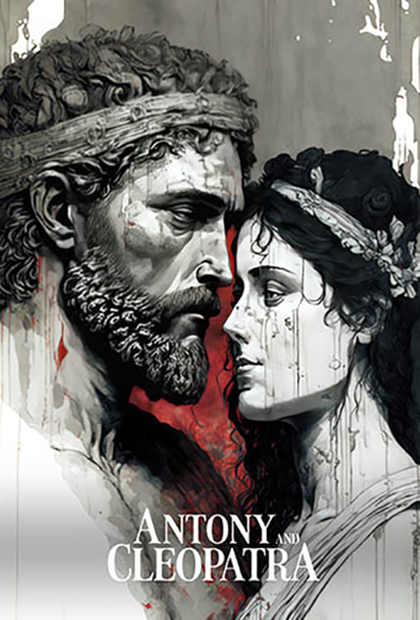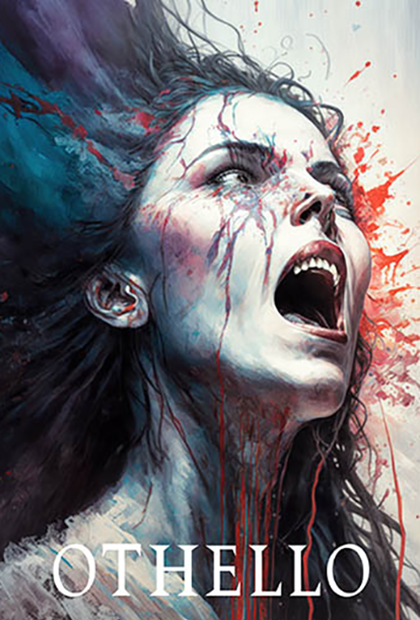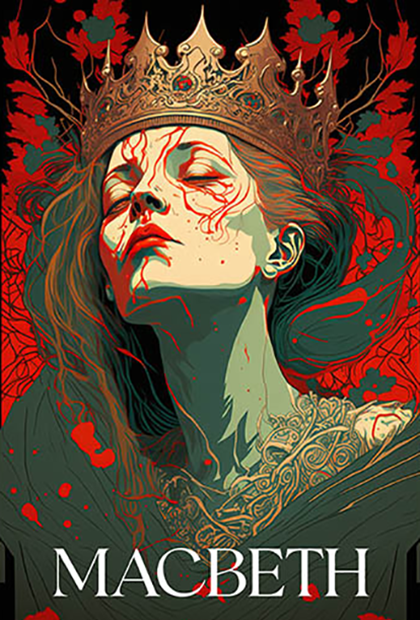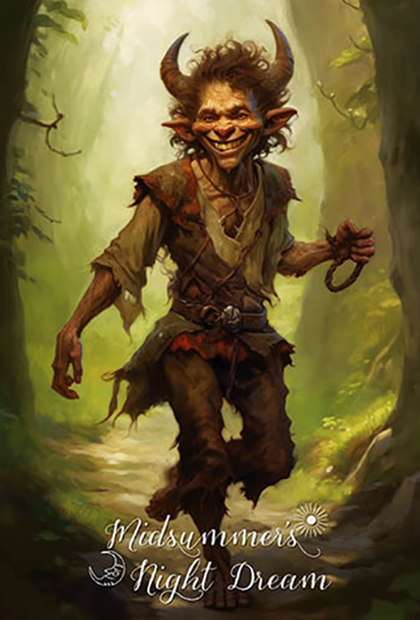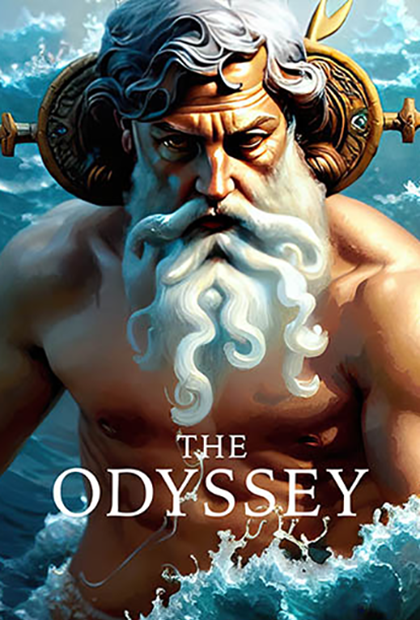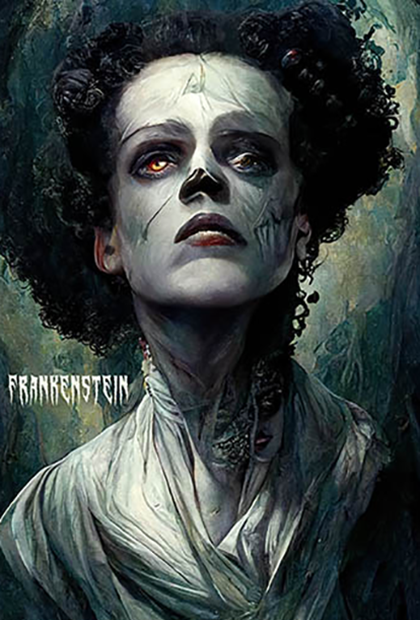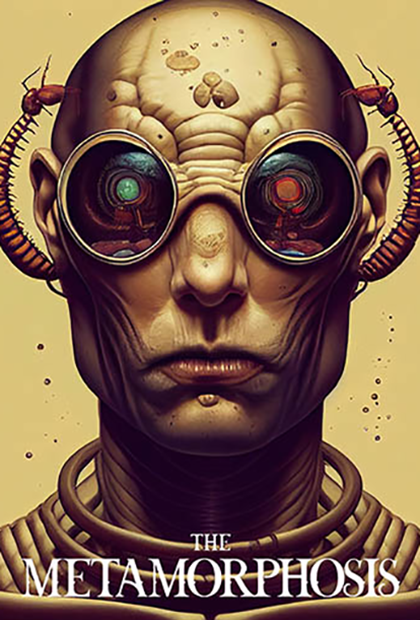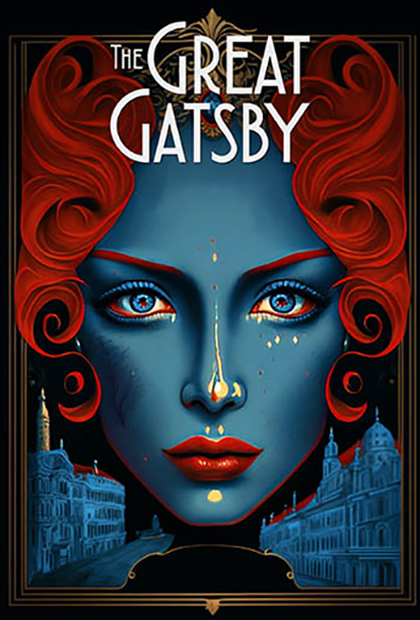Hamlet
*#OGBookClub
Sold Out - Available On:
jpg.storeWilliam Shakespeare’s Hamlet is one of the most well-known and enduring plays of all time. The play tells the story of Prince Hamlet of Denmark, who is seeking revenge for the murder of his father, the king. Along the way, he must confront his own doubts and fears, and ultimately make a decision about what he believes is right. The play is known for its complex characters, dramatic plot, and themes of betrayal, madness, and the consequences of inaction.
Description
From Wikipedia: The Tragedy of Hamlet, Prince of Denmark, often shortened to Hamlet (/ˈhæmlɪt/), is a tragedy written by William Shakespeare sometime between 1599 and 1601. It is Shakespeare’s longest play, with 29,551 words. Set in Denmark, the play depicts Prince Hamlet and his attempts to exact revenge against his uncle, Claudius, who has murdered Hamlet’s father in order to seize his throne and marry Hamlet’s mother.
Hamlet is considered among the “most powerful and influential tragedies in the English language”, with a story capable of “seemingly endless retelling and adaptation by others”.
There are many works that have been pointed to as possible sources for Shakespeare’s play—from ancient Greek tragedies to Elizabethan plays. The editors of the Arden Shakespeare question the idea of “source hunting”, pointing out that it presupposes that authors always require ideas from other works for their own, and suggests that no author can have an original idea or be an originator. When Shakespeare wrote, there were many stories about sons avenging the murder of their fathers, and many about clever avenging sons pretending to be foolish in order to outsmart their foes. This would include the story of the ancient Roman, Lucius Junius Brutus, which Shakespeare apparently knew, as well as the story of Amleth, which was preserved in Latin by 13th-century chronicler Saxo Grammaticus in his Gesta Danorum, and printed in Paris in 1514. The Amleth story was subsequently adapted and then published in French in 1570 by the 16th-century scholar François de Belleforest. It has a number of plot elements and major characters in common with Shakespeare’s Hamlet, and lacks others that are found in Shakespeare. Belleforest’s story was first published in English in 1608, after Hamlet had been written, though it’s possible that Shakespeare had encountered it in the French-language version.
Three different early versions of the play are extant: the First Quarto (Q1, 1603); the Second Quarto (Q2, 1604); and the First Folio (F1, 1623). Each version includes lines and passages missing from the others.
Numbered eBooks: 1,616
Number of Unique Covers: 150
Number of 1:1 Covers: 55
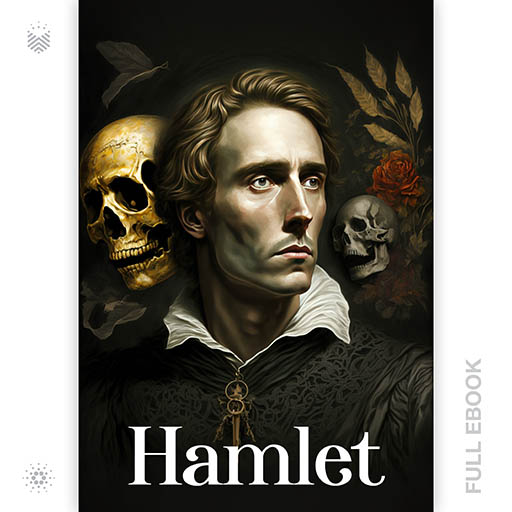
Hamlet
15 Unique Designs
x 38 Numbered eBooks
= 570 NFT eBooks
(35.27% of Supply)
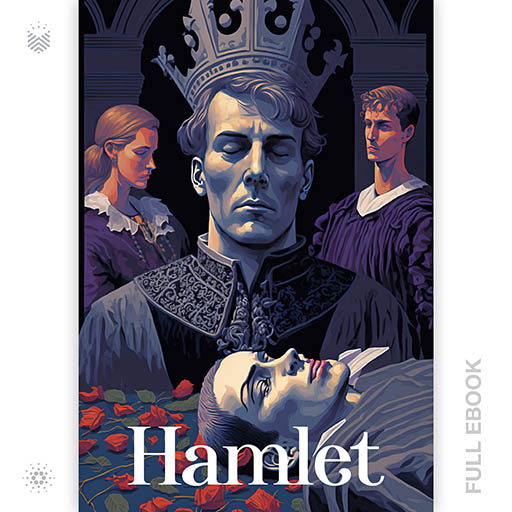
The Play Scene
10 Unique Designs
x 37 Numbered eBooks
= 370 NFT eBooks
(22.90% of Supply)
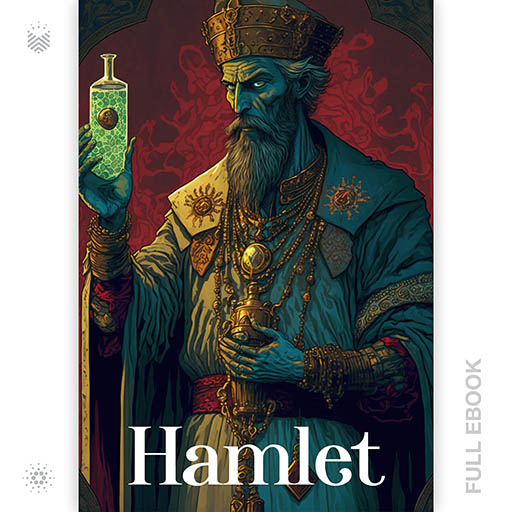
The New King
19 Unique Designs
x 13 Numbered eBooks
= 247 NFT eBooks
(15.28% of Supply)
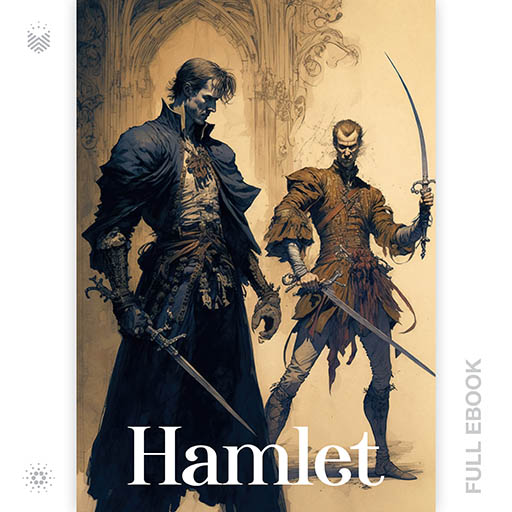
The Duel
20 Unique Designs
x 9 Numbered eBooks
= 180 NFT eBooks
(11.14% of Supply)
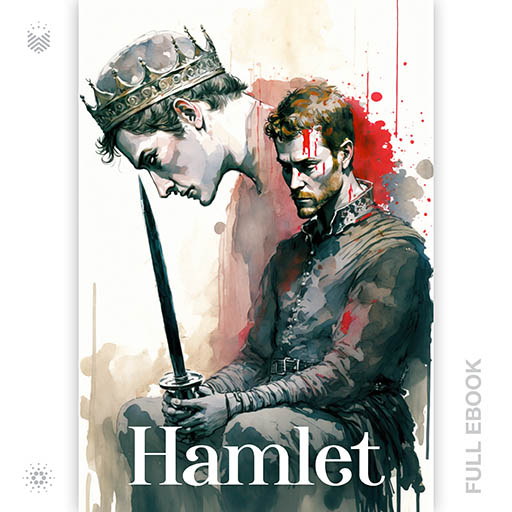
The Agony of Choice
10 Unique Designs
x 11 Numbered eBooks
= 110 NFT eBooks
(6.81% of Supply)

The Ghost of the King
21 Unique Designs
x 4 Numbered eBooks
= 84 NFT eBooks
(5.20% of Supply)

The Scorned Lover
22 Unique Designs
x 1 Numbered eBooks
= 22 NFT eBooks
(1.36% of Supply)
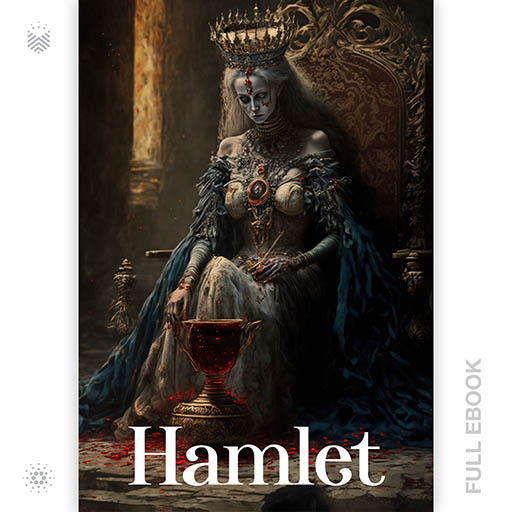
The Tragedies
17 Unique Designs
x 1 Numbered eBooks
= 17 NFT eBooks
(1.05% of Supply)
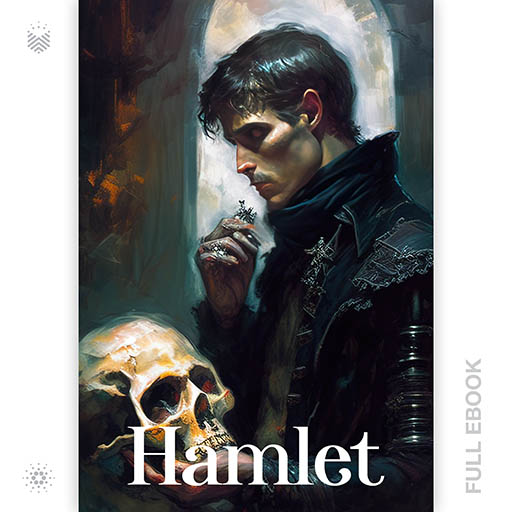
The Poor Yorick
16 Unique Designs
x 1 Numbered eBooks
= 16 NFT eBooks
(0.99% of Supply)
Details
Publisher : Book.io
Series : Shakespeare
First Publication Date : 1603
Author : William Shakespeare
Language : English
Word Count : 29,551
Format : DEA (Decentralized Encrypted Asset)
Read On : Book.io eReader dApp
Cover Art : Includes 4K hi-resolution book cover
Cardano Retail Price : 80 ADA
Cardano Discount Price : 65 ADA, #OGBookClub
Purchase Limit: 5
Cardano Policy ID : 061aab55e9dc89392747aecd923224ebeb3277a891942249e2e8f404
Author Info
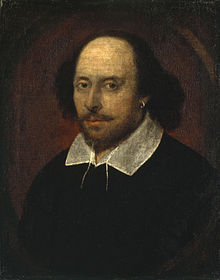
William Shakespeare
From Wikipedia: William Shakespeare (April 1564 – 23 April 1616) was an English playwright, poet and actor. He is widely regarded as the greatest writer in the English language and the world's pre-eminent dramatist. He is often called England's national poet and the "Bard of Avon" (or simply "the Bard"). His extant works, including collaborations, consist of some 39 plays, 154 sonnets, three long narrative poems, and a few other verses, some of uncertain authorship. His plays have been transla… Read More
-
by William Shakespeare
“King Lear” is a tragedy written by William Shakespeare. It is one of his most famous and enduring plays, believed to have been written between 1605 and 1606. The play tells the story of King Lear, an aging monarch who decides to divide his kingdom among his three daughters based on their professions of love for him. However, the distribution of the kingdom leads to treachery, betrayal, and ultimately tragic consequences.
The central themes of “King Lear” include the nature of power, the… Read More -
by William Shakespeare
“Romeo and Juliet” is a tragedy written by William Shakespeare. The play is set in Verona, Italy and tells the story of two young lovers from rival families, the Montagues and the Capulets, who fall in love and secretly marry. However, they are eventually discovered, leading to a tragic turn of events that results in the deaths of both lovers, as well as several other characters.
In the end, the feud between the two families is finally resolved through the tragic events that have taken place… Read More -
by William Shakespeare
“Julius Caesar” is a historical tragedy play written by William Shakespeare, believed to have been first performed in 1599. The play portrays the conspiracy against Julius Caesar, a prominent Roman general and statesman, and his eventual assassination on the Ides of March in 44 BC.
The play explores themes of loyalty, betrayal, and the consequences of political ambition. It also features some of Shakespeare’s most famous lines, including “Beware the Ides of March” and “Et tu, Brute?�… Read More -
by William Shakespeare
“Antony and Cleopatra” is a play by William Shakespeare that tells the story of the relationship between Mark Antony, one of the three rulers of the Roman Republic, and Cleopatra, the queen of Egypt. The play explores themes of love, politics, power, and betrayal, and it is set against the backdrop of the political turmoil in the Roman Republic. The play begins with Antony dividing his time between Rome and Egypt, where he is deeply in love with Cleopatra, but is also torn between his duty t… Read More
-
by William Shakespeare
Othello is a play about a Moorish general, Othello, who falls in love and marries a Venetian woman, Desdemona. Othello is an outsider in Venetian society and faces discrimination and mistrust because of his race. Additionally, Othello’s ensign, Iago, manipulates Othello into believing that Desdemona is unfaithful, leading Othello to murder her and then take his own life. The play explores themes of betrayal of love, jealousy, racism, nature of trust, and the destructive power of manipulation a… Read More
-
by William Shakespeare
Macbeth, a William Shakespeare tragedy, chronicles the bloody rise and fall of the Scottish warrior Macbeth. Guided by a prophecy foretold by three witches and his ambitious wife, Macbeth pursues power and the throne. He soon discovers that the prophecy and his ambition have clouded his judgment. Partly inspired by actual events, Macbeth is Book 2 of our Shakespeare series.
Read More -
by William Shakespeare
“A Midsummer Night’s Dream” is a famous comedy play written by William Shakespeare. It was most likely composed around the year 1595 or 1596 and is one of Shakespeare’s most well-known and frequently performed works. The play explores themes of love, magic, and the unpredictable nature of human emotions.
The story takes place in Athens, Greece, and the surrounding enchanted forest. It revolves around the adventures and misadventures of several groups of characters whose lives become inte… Read More
You might also like
by Homer
The Odyssey is one of two major ancient Greek epic poems attributed to Homer. It is one of the oldest extant works of literature still widely read by modern audiences. As with the Iliad, the poem is divided into 24 books. It follows the Greek hero Odysseus, king of Ithaca, and his journey home after the Trojan War.
Read More
by Mary Shelley
This is your chance to own the first release in the Book Token Classics: Monster Editions. Frankenstein by Mary Shelley is considered by many scholars to be the first official science-fiction novel ever written. Frankenstein has had considerable influence on literature and on popular culture, spawning a complete genre of horror stories, films, and plays.
Read More
by Franz Kafka
The Metamorphosis by Franz Kafka is the eighth release in the Book.io Classics: Monster Editions. The Metamorphosis, first published in 1915, is the story of a young man who, upon waking, discovers he has transformed into a giant insect. Widely considered a masterpiece and broadly studied, The Metamorphosis is a psychological study of Gregor’s family and the world around him as he struggles through life as a giant bug.
… Read More
by F. Scott Fitzgerald
“The Great Gatsby” is a novel written by F. Scott Fitzgerald and published in 1925. The story is set in the 1920s and explores themes such as wealth, love, and the American Dream.
The novel is known for its commentary on the Roaring Twenties, a time period marked by economic prosperity, social and cultural change, and moral decay. Fitzgerald captures the excess and indulgence of the era, but also critiques it, showing how it ultimately leads to the downfall of many of the characters.
… Read More

